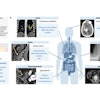
Small hospitals and rural communities have a harder time than their urban counterparts when it comes to recruiting and retaining interventional radiologists (IRs) and meeting interventional service demands, according to a study published online December 11 in the Journal of the American College of Radiology.
The findings highlight the importance of addressing how geographical factors may negatively influence patient care, wrote a team led by Dr. Eric Friedberg of Emory University in Atlanta.
"Patient access to high-quality healthcare services is increasingly prioritized as a pillar of ongoing policy reform in the United States," the group wrote. "Although a number of studies have demonstrated disparities in healthcare access related to sociodemographic and economic factors, recent work has focused on geographic factors -- leading a variety of authors to opine that one's ZIP code may be a more important determinant in one's health than one's genetic code."
The majority of radiologists work as generalists, with subspecialization being most common in large, academic practices that tend to be in urban areas. Because interventional radiology continues to be increasingly subspecialized, there's concern that patients in small, rural hospitals will be negatively affected.
"Questions remain around whether this trend will increase the risk that small and rural hospitals will have difficulty recruiting and retaining IRs who no longer seek to provide diagnostic radiology services," the researchers wrote.
Friedberg and colleagues emailed a 22-question survey created by two American College of Radiology (ACR) workgroups to 1,005 ACR members who identified themselves as group practice leaders, general radiologists, interventional radiologists, or abdominal radiologists. The researchers defined rural facilities as those that served populations up to 249,000. Their findings are shown in the table below.
| Personnel issues at interventional radiology practices | ||
| Nonrural facilities | Rural facilities | |
| Fell short of meeting demand for interventional radiology services | 14.3% | 29.1% |
| Difficulty recruiting interventional radiology physicians | 40.6% | 67% |
| Difficulty retaining interventional radiology physicians | 29% | 40% |
The most common reasons cited by survey participants for difficulty recruiting interventional radiologists was that these physicians did not want to do diagnostic work (56.2%) and they did not want to practice in a rural setting (48.8%). In addition, rural hospitals had difficulty retaining interventional radiologists because of what these physicians perceived to be a lack of case mix complexity (67.5%) or a small volume of cases (66.1%).
So how can radiology address this problem? Professional societies such as the ACR and the Society of Interventional Radiology (SIR) can help, the group wrote.
Such societies "are likely to play a critical role in developing plans and solutions to guide radiology practices," Friedberg and colleagues concluded. "Potential solutions include ... development of additional training opportunities for general radiologists to provide a broader range of at least less complex interventional procedures, novel contractual and practice organizational options for IRs ... and synergistic partnering or alliance with other subspecialties or larger institutions."




















